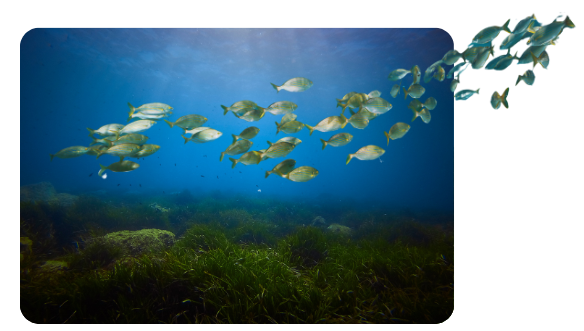Story
Measuring manmade and natural gases in the sea air
23 May 2023
Our Dr Frances Hopkins talks about how the Marine Biogeochemistry team measure various gases produced both by human activities and naturally by the ocean: from Carbon Dioxide and Methane, to climate-cooling gases like Dimethyl sulfide.

Dr Frances Hopkins was featured on BBC sounds last week for an interview with Marika Peters, talking about the various atmospheric measurements taken at our scientific monitoring station, Penlee Point Atmospheric Observatory.
Read a transcript of the interview below, or listen online here from 32 minutes 55 seconds.
Dr Hopkins: “I’m Dr Frances Hopkins. I’m a marine research scientist and we’re currently on a little promontory of land overlooking Plymouth Sound in the southwest of the UK, quite close to the Penlee Point Atmospheric Observatory, a scientific monitoring station. We’ve got cloudless blue skies, quite a stiff north-easterly breeze, which is rippling the ocean. So, we’ve got a blue sparkling ocean. All in all, quite a nice place to be!”
Marika Peters: “And, you don’t just come here to hang out. Your observatory is taking in vital measurements to help us understand more about things like climate change, yes?”
Dr Hopkins: “Yes. We do long term measurements of carbon dioxide and methane, but we’re also interested in just understanding what kinds of gases the ocean is producing naturally. And some of these actually have cooling effects on the planet by influencing the formation of climate cooling clouds. Dimethyl sulfide (DMS), for example, is one of these gases.”
“I’ve worked on DMS now for 15 plus years and I’m kind of mind blown by the idea that this gas that’s basically produced by microbes in the ocean could influence our climate in such a massive way. And that still inspires me to this day.”
Marika Peters: “And you’re measuring all of this with, what looks like, a little, chimney sort of thing on top of a tiny hut. Can we go and have a look inside and see it in action?”
Dr Hopkins: “Yep! So, hopefully you can see some standard tubing as well up there – that’s pumping the air down through the aerosol sampler, but there should also be some quite thin tubing, and that’s drawing in the sea air, which is then being analysed as we speak inside the hut.”
“So, for example, we’ve got the ozone monitor at the top, and that’s reading about 50 PPB [parts per billion] out there, just quite high today. With the winds and given the direction they are moving, we’re essentially sampling quite polluted air from across the UK land mass. And then we have CO2 live data – we have 427 PPM [parts per million]. So yeah, pretty high, atmospheric CO2. Like any other monitoring station in the world, we see a very strong and persistent increase in the concentration CO2 and methane in the atmosphere.”
“It’s funny as scientists, you kind of just quite calmly and coolly accept the facts of the situation, but as a member of society, it’s really sad and frustrating that we’re not seeing that change in direction.”
Marika Peters: “Obviously we’ve established the work you’re doing here is really important and you’ve got a lovely view and a great lunch spot, but what is it about your work measuring these gases and aerosols that you love so much?”
Dr Hopkins: “That’s a good question. I think what got me into this field of research was that it’s all kind of about understanding how Earth functions really – how things like the ocean, the atmosphere are linked together.”
Marika Peters: “And also presumably what we are doing that are changing those relationships?”
Dr Hopkins: “Yeah, of course. A large part of my research has been, over the years, looking at the effect of human emissions of CO2 on the oceans and how that then impacts on the production of these gases.”
“I mean, there’s pretty cool things about being a marine scientist. I have been able to travel the world – I’ve been to the Arctic, I’ve been to the Southern Ocean, I’ve spent time at sea. We get to come out to amazing places like Penlee Point just to do some maintenance on the instruments in the hut here. It often induces wonder in people when you tell them I do, so that’s always nice.”
You can listen to the full recording on the BBC website here >>
